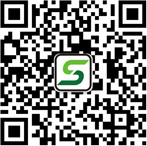Digital Mobile Radio (DMR) is a versatile, standards-based technology revolutionizing amateur and professional two-way communication. Unlike analog systems, DMR offers enhanced audio clarity, extended coverage through interconnected networks, and advanced features like text messaging and GPS tracking. Whether you’re a hobbyist, emergency responder, or industry professional, understanding the prerequisites for DMR operation ensures a seamless transition into digital communication.
1. Core Hardware Requirements
DMR-Compatible Radio
The foundation of any DMR setup is a compliant radio. Options range from affordable handheld portables (e.g., AnyTone, TyT) to sophisticated mobile and base units. Key considerations include:
- Tier Classification: Most users require Tier II (conventional systems) or Tier III (trunking) devices.
- Dual-Capacity Direct Mode (DCDM): Enables direct unit-to-unit communication without repeaters.
- GPS and Messaging Features: Critical for location sharing and data applications.
Antennas and Batteries
- High-Gain Antennas: Improve signal range, especially in handheld setups.
- Extended-Life Batteries: Ensure uninterrupted operation during field use.
Repeater Access
While DMR supports direct mode, repeaters expand coverage by relaying signals over vast distances. Verify local repeater compatibility (e.g., Color Code, Time Slot) to avoid interference.
2. Programming Tools and Software
Configuration Software
DMR radios require initial programming via manufacturer-specific software (e.g., CPS). Essential steps include:
- Installing Drivers: Connect the radio to a computer using USB cables.
- Channel Configuration: Define frequencies, Color Codes, and Talkgroups.
- Codeplug Management: Save and backup device settings for future use.
Firmware Updates
Regularly update radio firmware to access new features and security patches.
3. Network Integration
DMR Networks
Brandmeister, DMR-MARC, and other IP-based networks link repeaters globally. To join:
- Obtain a DMR ID: Register for a unique identifier at [radioid.net](https://radioid.net/).
- Talkgroup Allocation: Select groups based on geographic or thematic interests (e.g., Worldwide Talkgroup 91).
Hotspot Devices
For areas without repeaters, portable hotspots (e.g., OpenSpot) simulate network connectivity via Wi-Fi or cellular data.
4. Operational Knowledge
DMR Protocol Basics
- Time Slots: Each frequency supports two simultaneous conversations (Slot 1/2).
- Color Codes: Function like CTCSS tones to minimize interference.
Best Practices
- License Compliance: Amateur users must hold a valid license for transmitted frequencies.
- Etiquette: Avoid monopolizing talkgroups and identify your station periodically.
5. Troubleshooting and Optimization
- Signal Issues: Check antenna connections and proximity to repeaters.
- Programming Errors: Verify Codeplug settings against repeater requirements.
- Network Connectivity: Ensure hotspots or repeaters are linked to active servers.
Conclusion
DMR radio merges affordability with cutting-edge digital capabilities. By securing the right equipment, mastering programming, and integrating into global networks, users unlock reliable, feature-rich communication. Start with a robust handheld unit, engage with local clubs for mentorship, and explore the dynamic world of DMR.



